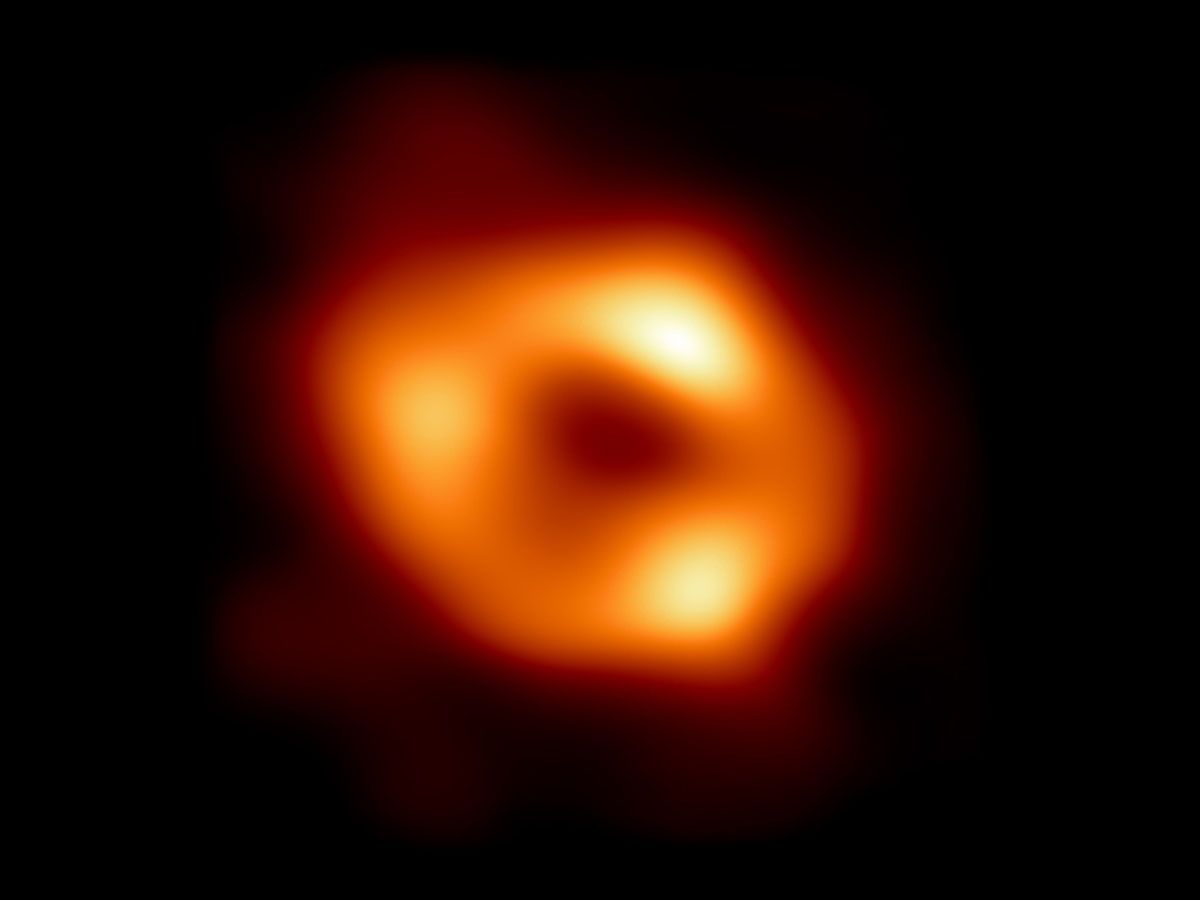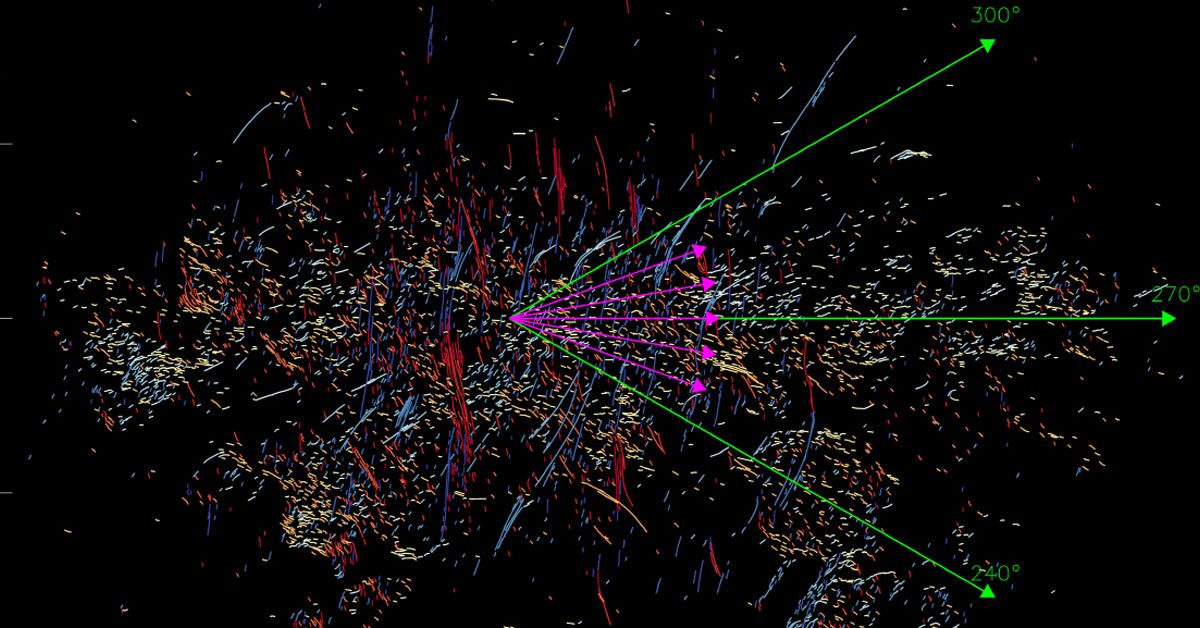We might think we've seen it all in a universe full of dazzling celestial bodies and mysterious cosmic phenomena. However, an incredible discovery has recently unfolded, setting the scientific world abuzz.
A team of astrophysicists has spotted an entirely new spectacle in the center of our home galaxy, the Milky Way. But what makes this discovery so extraordinary?
They found cosmic threads, like fascinating space tendrils, extending in surprising directions around the heart of our galaxy. Vertical filaments, towering threads of cosmic material, were first spotted in the 1980s.
But now, our scientists have unveiled something even more intriguing: horizontal filaments, akin to the spokes on a wheel, swirling around a black hole named Sagittarius A*. How did they make this stunning discovery?
The Milky Way's Center and Sagittarius A*
Our galaxy, the Milky Way, is an expansive spiral filled with countless stars, dust, and gaseous material, stretching over an enormous distance of 100,000 light-years.
But what sits at its heart? Nestled deep in the core of this vast spiral, a hefty distance of 26,000 light-years from our home planet Earth, lies a supermassive black hole labeled Sagittarius A*.

This black hole, carrying a mass millions of times greater than our Sun, holds such an intense density that its gravitational pull traps even light itself. Picture it as an unseen cosmic Hoover, ceaselessly vacuuming up any matter that ventures too near.
You might question the significance of Sagittarius A*? In fact, black holes are much more than mere agents of destruction; they serve as celestial sculptors.
Their immense gravitational force has the ability to mold galaxies, trigger the genesis of stars, and influence the movement of all surrounding objects.
Therefore, comprehending Sagittarius A* equips us with the knowledge to understand how the Milky Way, and perhaps other galaxies, took shape and developed over countless eons.
The Discovery of Vertical Filaments in the 1980s
About four decades ago, astrophysicist Farhad Yusef-Zadeh at Northwestern University made a striking discovery while studying this intriguing black hole. He identified strange, vertical structures rising high above and diving deep below the galactic plane, like towering pillars in a grand cosmic cathedral.
These structures, named vertical filaments, stretched up to 150 light-years from the galaxy's plane, nearly half the length between Earth and the center of the Milky Way!

This discovery was groundbreaking at the time. The vertical filaments were found to consist of particles zipping around at near-light speeds. But how were these particles moving so fast?
The clue lay in the filaments' alignment. They were perpendicular to the galaxy's plane, indicating that they were tracing the Milky Way's magnetic field.
It seems these high-energy electrons were being whipped around by the galaxy's magnetic force, forming these fascinating vertical filaments.
The MeerKAT Telescope and the Detection of New Filaments
How do scientists make new discoveries in the vastness of space? By using incredibly powerful telescopes. One such marvel of technology, the MeerKAT telescope in South Africa, played a vital role in this recent discovery of the new cosmic threads.
Named after a small mammal known for its sharp eyesight, the MeerKAT has a vision unlike any other. But what did it see?

MeerKAT's eyes penetrated the background noise of space, the cosmic equivalent of static on a radio. Background noise can be a major obstacle when observing faint, distant objects in space.
It used a technique that minimized background interference and reduced noise in its images. Like adjusting the focus on a camera, this approach sharpened the view of our galaxy's core, revealing these new, mysterious filaments in crisp detail.
The Similarities and Differences between the Two Types of Filaments
Unlike the vertical filaments discovered in the 1980s, these filaments lie horizontally, stretching across the space around Sagittarius A*.
Picture a bustling city skyline. Tall buildings of various shapes and sizes reach for the sky, while roads and railways stretch across the ground. This scene is not unlike what we see in the center of our galaxy, with vertical and horizontal filaments providing a cosmic version of this architecture.
So, what key characteristics set these two types of filaments apart? And how are they similar? For starters, there are many more vertical filaments, thousands in fact, compared to a few hundred horizontal ones.
The vertical filaments are also significantly taller, reaching heights of up to 150 light-years, while the horizontal filaments are 5 to 10 light-years long.

Yet, there are distinct differences beyond their numbers and sizes. The vertical filaments are magnetic and composed of particles moving at near-light speeds.
In contrast, the horizontal filaments emit thermal radiation and consist of thermal material from a molecular cloud. Their alignments also differ: vertical filaments stand perpendicular to the galactic plane, while horizontal ones lie parallel but point radially toward the black hole.
The unique configurations of these filaments might hold clues to their formation and the black hole's activity. The vertical filaments' perpendicular alignment with the galactic plane suggests a strong relationship with the Milky Way's magnetic field.
Meanwhile, the radial orientation of the horizontal filaments hints they may have formed due to activity from Sagittarius A*, possibly a jet emanating from the black hole and stretching the surrounding gas into these peculiar filaments.
Insights into the Black Hole's Spin and Accretion Disk Orientation
This new discovery of the horizontal filaments could help scientists decode some of the black hole's secrets. For instance, by studying the filaments, astrophysicists might gain critical insights into the black hole's spin and the orientation of its accretion disk.
The spin of a black hole is a key characteristic that influences its surrounding environment, including the formation of jets and the growth of its accretion disk - the disk of gas and dust spiraling into the black hole.
Meanwhile, the orientation of this disk could also affect the formation and behavior of the filaments, adding another piece to the cosmic puzzle.
Every new discovery in space helps us understand our place in the universe a little better, and this finding is no different. These filaments, vertical and horizontal alike, could provide valuable insights into the formation of our galaxy, its magnetic field, and its interaction with the central black hole.
By unveiling these celestial threads, we're taking a significant step toward unraveling the mysteries of our home galaxy, the Milky Way. Just as studying the veins of a leaf can tell us about the health of a tree, these cosmic threads may reveal the life story of our galaxy.
Source: iopscience.iop.org












